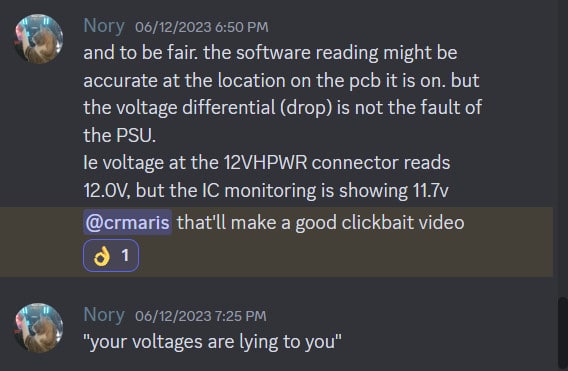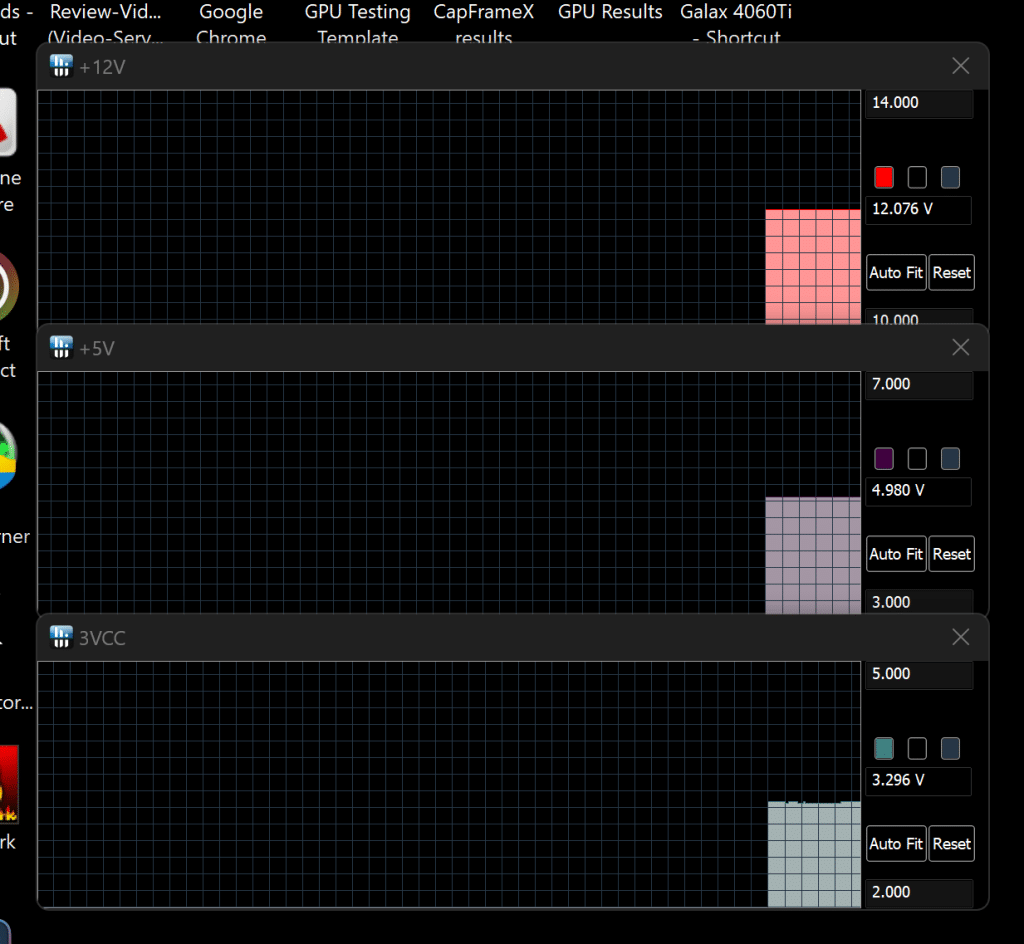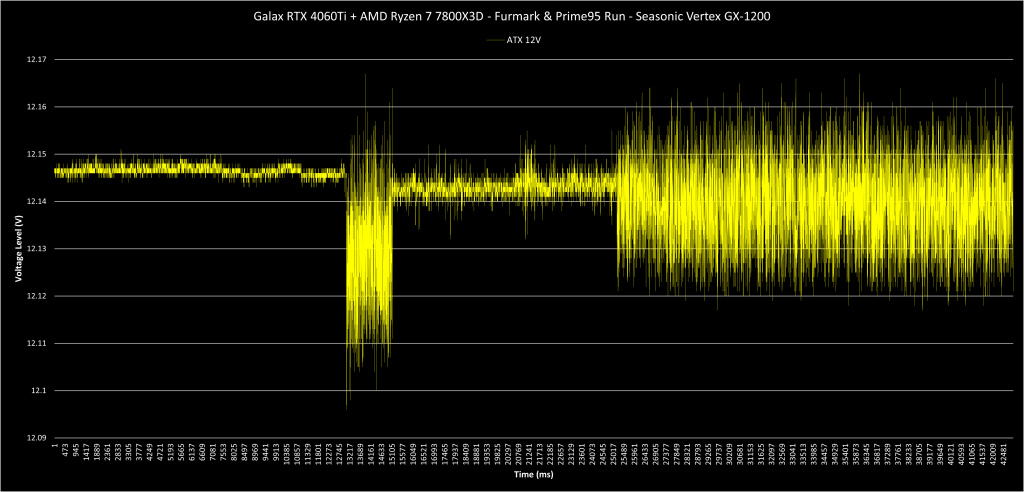A member (Nory) of our discord server threw the idea, to make a video or write an article showing the differences between what the mainboard’s sensors read and the actual voltage measured by an instrument.
Most users are unaware that the voltage readings that the mainboard provides in most cases are way off, and they get worried once they notice too low voltages, especially on the 12V rail. In today’s article, I will try to shed some light on this by comparing the readings from HWinfo with those obtained by Powenetics v2, which can take measurements from thirteen different sensors.
Test System & Methodology
Before I provide the comparison charts, let’s look at the test system first.
| Test System Specs | ||||
| Mainboard | Asus TUF GAMING X670E-PLUS | |||
| CPU | Ryzen 7 7800X3D | |||
| GPU | Galax RTX 4060Ti | |||
| NVMe | XPG SX8200 Pro 2 TB NVMe | |||
| RAM | XPG Lancer DDR5 (2 x 16GB) 6000MHz | |||
| Power Supply | Seasonic Vertex 1200W (Cybenetics Platinum) |
|||
| CPU Cooler | NH-D15S | |||
| Case | Raijintek PAEAN | |||
| Ambient Temperature | 25°C ±2°C | |||
| Drivers | NVIDIA 535.98 | |||
The idea behind testing is simple, having the system at idle for several minutes while logging with both HWinfo and Powenetics and starting Furmark, which typically leads to notable voltage deviations at 12V, and after a while, also start Prime95 small FFTs, to stress the CPU and the RAM, besides the GPU. The only problem is that I use a powerful PSU, and the system’s CPU and GPU are not power-hungry, but I will repeat this experiment at the first chance with an Intel i9-13900K and a power-hungry GPU.
HWInfo & Powenetics Results
During the entire test process, the 12V rail’s line is almost flat, and the same goes for 5V, while at 3.3V, there is some weird deviation, given that this rail doesn’t get any stress. The voltage rails look fine, though, with only 3.3V, slightly below the nominal voltage.
The Powenetics 12V graph tells a different story. During the start of Furmark, there is a voltage drop on this rail, and the ripple is increased afterward. Once I start the Prime95, the 12V rail goes a bit wild!
The 5V rail is slightly stressed during the Furmark’s start.
In no case does the 3.3V rail drop as low as what the mainboard’s sensors report.
Conclusion
Trusting your mainboard’s sensors is not the wisest thing to do. You might notice voltages as low as 11.7V, but the system still works without issues. The fact is that only if you experience sudden restarts under load you should check if something is going wrong with the power supply. Moreover, suppose you want to ensure everything is fine. In that case, it is better to get a cheap multimeter and hook it on a 4-pin Molex connector to check the 12V rail, which is the most important, instead of considering the mainboard’s readings.
Expect a video version of this article.
Powenetics V2 pre-order







